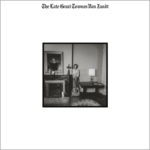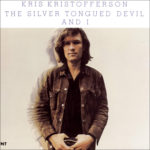How a Few Texas Outlaws Changed Country Music Forever
Country music evolved out of the backroads of America, absorbing every kind of musical and cultural influence, from English ballads and the blues to folk music and cowboy songs. But by the 1960s, country music, as it had become understood by mainstream America, had calcified into a slick, overproduced musical product.
With its cultural and commercial heart based in Nashville, the Music City’s studios pumped out hit after hit that was tailor-made for mass radio play but which seemed to have lost some of the grit, edge, and heart that had defined the likes of pioneering legends Hank Williams, Bob Willis, Jimmie Rodgers, and others.
As the 1970s brought a period of cultural transition to the U.S., a handful of intrepid singers and songwriters began to forge a new road for country, with an eye on the past and firm belief in the possibilities of the future.
A Break from Nashville
In 1971, Willie Nelson was just another young singer-songwriter in Nashville whose career seemed to have stalled. He had written a few hits for other artists — most notably, “Crazy” for Patsy Cline — but his own singing career had never really taken off. He decided to head back to Texas. If Nashville didn’t want Willie, he knew Texas would let him be who he wanted to be.
Back in Texas, Nelson encountered a nascent country music scene that was looking away from Nashville for inspiration and back toward the origins of the genre. These included artists like Jerry Jeff Walker, Billy Joe Shaver, and a trio of Lubbock boys — Butch Hancock, Joe Ely, and Jimmie Dale Gilmore — who called themselves The Flatlanders.
Taking up residence at venues such as John T. Floore’s Country Store in Helotes and the Armadillo World Headquarters in Austin, these artists were morphing influences from rock, blues, and psychedelic culture into a more traditional country sound. Nelson was soon joined by other Nashville outcasts — fellow Texans Waylon Jennings and Kris Kristofferson and others — and the regional sound started to gel into a movement.

Texas Outlaws
In the late-1960s, Johnny Cash released two live albums — At Folsom Prison and At San Quentin — that helped set the stage for the new, rougher breed of country. They helped prove that there was an appetite for roots-oriented country music. Throughout the early-1970s, Nelson, Jennings, and Kristofferson, as well as a number of other significant artists including Billy Joe Shaver, David Allan Coe, Ray Wylie Hubbard, Guy Clark, and others, began to release music that drew from both the early roots of country music and the rock and folk scenes of the 1960s and 1970s.
By the mid-1970s, these country acts had evolved into a scene of their own, and in 1976, Nelson and Jennings teamed up on a compilation album that would give a name to their musical movement: Wanted! The Outlaws. The album featured a dustier sound that was rough around the edges but still supported well-crafted songs that became wildly popular. Wanted! The Outlaws became the highest-selling country record ever produced outside of Nashville, and it offered critics a label for this new breed of country: Outlaw Country.

A New Generation of Voices
Outlaw country’s success in the late-1970s and early-1980s inspired a new generation of country artists who now felt like they had the freedom to take more chances with their music. Dwight Yoakam, Hank Williams Jr., and Johnny Paycheck all owe their sounds to the movement. Outlaw country also opened doors for pioneers of the Bakersfield sound, most notably Merle Haggard, and unique talents like Townes Van Zandt. A new generation of country singers would be brought up on the sound, including other Texas legends, like Robert Earl Keen and Lyle Lovett (who were roommates at Texas A&M).
An Enduring Legacy
Now, outlaw country has become something of its own brand and subgenre within country music. But the legacy of the music that Waylon, Willie, and the boys introduced in the 1970s lives on in the way it has greatly influenced wider cultural movements and the entirety of popular music. From fashion to rock ’n’ roll, culture to politics, outlaw country represented an American (and a distinctively Texan) approach to cultural expression — one that prized authenticity, individuality, and the value in following your own path.
5 Essential Outlaw Albums

Shotgun Willie (1973), Willie Nelson
Although it is the 16th studio album by Willie Nelson, Shotgun Willie is the record where the man we all know as Willie came into focus. It was his first after being dropped by his Nashville label, made not long after he returned to Austin. Nelson has said it was the album that “cleared my throat.”

Wanted! The Outlaws (1976), Waylon Jennings, Willie Nelson, Jessi Colter, and Tompall Glaser
Not only did the album thrust outlaw country into the mainstream, it introduced the wider country world to a number of talented performers and songwriters who were standard-bearers of the moment, including songs by Billy Joe Shaver and Jessi Colter, and even an old Jimmie Rodgers tune performed by Tompall Glaser.

Viva Terlingua (1973), Jerry Jeff Walker
Recorded live at the legendary dancehall in Luckenbach — a location that would feature in another famous Waylon and Willie outlaw track — Viva Terlingua is a rally call in the wilderness for a new approach to Texas music. Featuring the raucous Lost Gonzo Band and songs by Guy Clark, Gary P. Nunn, and Ray Wylie Hubbard, the album ushered in a new swagger to Texas songwriting and performing.

The Late Great Townes Van Zandt (1972), Townes Van Zandt
Townes, who casts a long, tragic shadow across the history of Texas music, is difficult to classify. With songs that feel steeped deep in folk and blues traditions, he is often lumped into outlaw country because of the era in which he wrote and the associations he kept. But the very appearance of Van Zandt in Texas in the middle 1970s is evidence that the doors had been opened for musical talents who wanted to explore the roots of the culture, no matter how raw or eccentric those artists were.

The Silver-Tongued Devil and I (1971), Kris Kristofferson
Texas-born Kristofferson was thrust from obscurity as a young Nashville songwriter when his Me and Bobby McGee became a posthumous megahit for Janis Joplin. The first album released after the song’s success, The Silver-Tongued Devil and I showcased Kristofferson’s masterful skills as a songwriter merged with his emerging talent as a performer.
For more on Texas’s music history, travel the East Texas music highway, explore the origins of rock ’n’ roll, and meet some up-and-comers.
© 2020 Texas Farm Bureau Insurance



